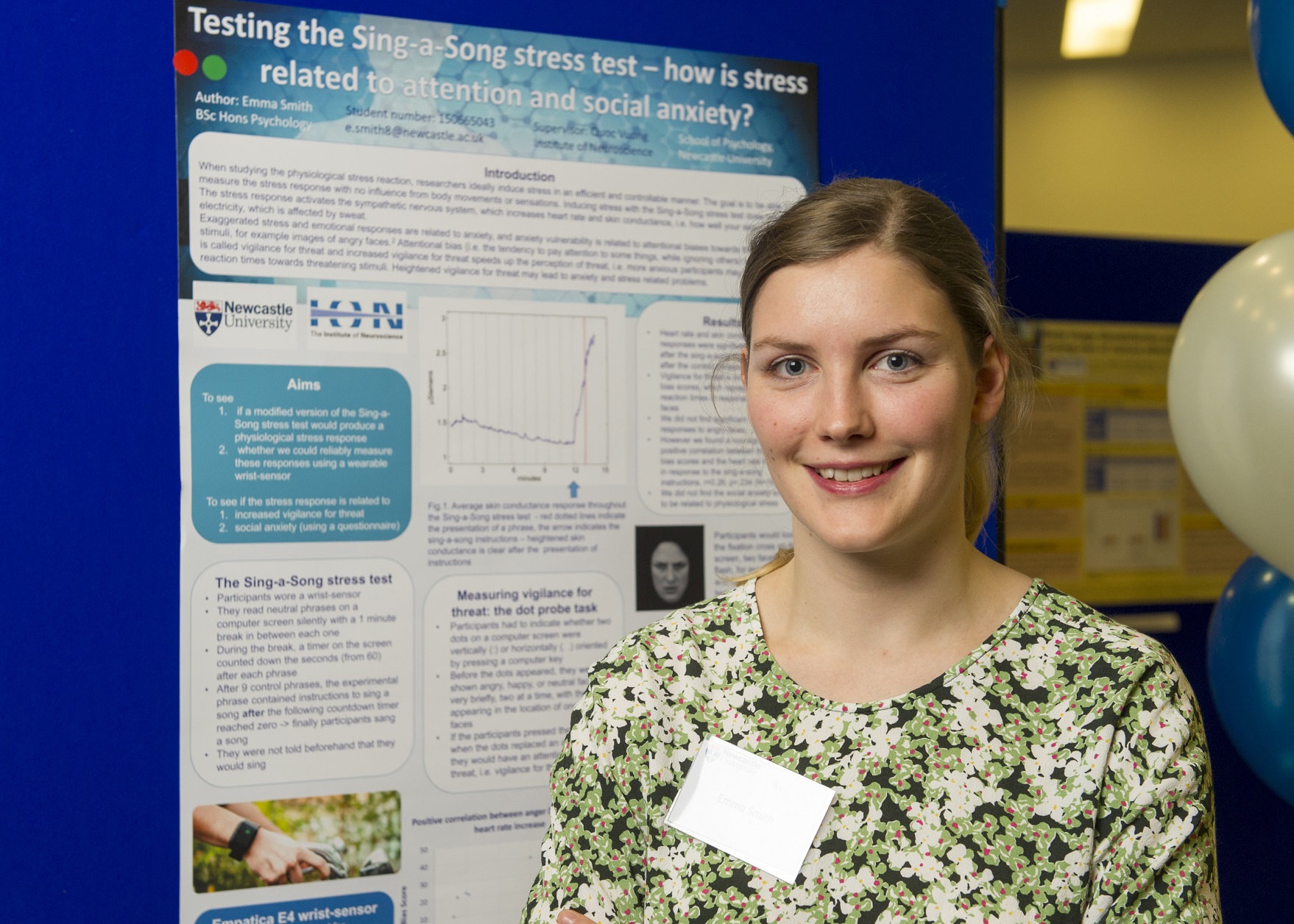2017 Participants
 Emma Karoliina Smith
Emma Karoliina Smith
When studying the physiological stress response, the goal is to induce stress in an efficient and controllable manner. We used a modified version of the Sing-a-Song stress test (SSST) to induce stress in our participants. The stress response activates the sympathetic nervous system, which increases heart rate and skin conductance, which we measured using a wearable wrist-sensor. Exaggerated stress and emotional responses are related to anxiety, which in turn is related to attentional biases towards threatening stimuli. Attentional bias towards threat is measured by measuring participants’ reaction times while they respond to threatening stimuli. We were interested in whether the stress response is related to faster threat reaction times. We did produce a physiological stress response in participants by using the SSST, however we did not find physiological stress to be related to participants’ threat-related attentional biases. This may however be due to lack of power, i.e. a small sample size.
Funding source: Newcastle University
Supervisor: Dr Quoc Vuong
